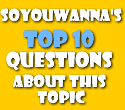5. PROOFREAD THAT BABY
This is your final chance to change anything. Check to make sure that the margins are even, that your formatting is consistent, that you don't have any spelling errors, and that you put your current and permanent contact information. Don't get too crazy about how things look. There is no "right" way. Just remember that it should look as professional as possible, on 8.5 by 11 inch paper (either white or off-white résumé paper), and it should be so easy to read, that a ten second scan would tell the reader that you have many marketable skills.After you've proofread your résumé so many times that your eyeballs hurt, give it to your mother, brother, sister, nephew, dog, midget, Eskimo, and nun so that they can all tear it apart ruthlessly. They will catch any mistakes that you missed, and also provide helpful suggestions. It is absolutely imperative that you get as many eyeballs on your résumé as possible. You must NOT, under any circumstances, have any typographical mistakes on your résumé. This is very, very important! Résumés with typos are usually thrown into the trash.
The final touch on your résumé: at the bottom, put "References Available Upon Request." Then, when you go into the interview, at the end you should hand the interviewer a nice, smooth sheet of paper with your references on them (full name, address, telephone number, and relation to you), and your name and contact information nice and big at the top.
And that's that! All that's left is for you to look at as many example résumés as possible, to get a sense of what works. Remember to send 10% of every paycheck to SoYouWanna.net as a token of your gratitude, but until then, happy job hunting! 6. More Resources
If after all this great advice you still need more tips on How to Write a Resume, we won't fault you. We'll just refer you to the Careers & Work Experts at eHow.
And finally, for a funny example of what NOT to put on your resume, check out this funny article> How to Ace Your First Job Interview


